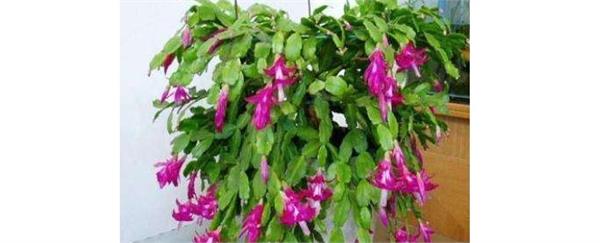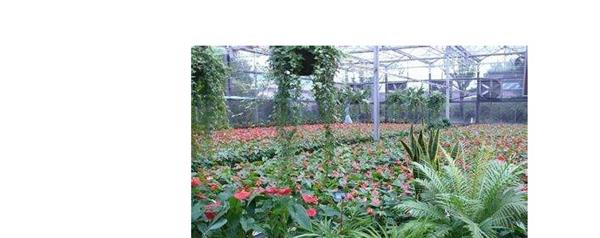Matters needing attention in indoor culture of flowers and plants common matters needing attention in flower culture
Flowers are a kind of plants that people like very much in their daily life. They have always been paid close attention to. Next, let's take a look at the precautions for flower farming. Through the study of flower knowledge, we can better apply them to practical life.

Flower Bonsai Conservation Notes
1. Avoid drought. Think of watering, do not think of watering, sometimes for a few days regardless of, once found that the leaves wilted, only rapid hydration, leaves will return to normal, this is a reaction of the pile body to adapt to the environment, but long-term so, too strong transpiration will eventually make the pile body big "disease" difficult to heal, dehydration and death.
Second, avoid fertilization. In midsummer, high temperature, leaf water loss faster, at this time fertilization can make the pile body cell concentration is less than the external environment concentration, resulting in plant cell moisture reverse soil flow, pile body due to fertilizer damage water loss and death.
Third, avoid noon bath. At noon in summer, do not spray water or water into the pot under the light. This "pampering" way will make the bonsai temperature suddenly lower than the ambient temperature and hurt the pile.
4. Avoid sudden shade. Under normal circumstances, in order to avoid high temperature damage, when the ambient temperature exceeds the maximum temperature tolerated by the pile body, the bonsai should be moved to a relatively low temperature area with weak light (about 2 degrees lower) to facilitate the growth of the pile body, but if it is suddenly moved indoors or in a low temperature area without light, after a few days, the leaves will naturally fall off, and the pile body will quickly shrink and die.
5. Avoid water stains. When the ambient temperature exceeds 28 ℃, the potted plant should be protected from shade, otherwise, the amount of water obtained by the pile from the soil is far less than that lost due to transpiration, and the leaf edge will be burned and scorched in light, and the pile will be severely damaged by the sun and die.

Indoor Farming Flower Plants Notes
Temperature: Adjust appropriately according to different flowers
In the northern region, the winter climate is cold and the temperature is low. Generally, southern flowers need to be moved indoors for wintering, and adjust the appropriate temperature according to the requirements of different flowers. High-temperature flowers, such as Milan, poinsettia, African balsam, begonia and cactus succulent flowers, should try to place the flowerpot in sunny, high temperature (between 20℃ and 25℃) indoor windowsill, the minimum temperature shall not be lower than 10℃. Mid-temperature flowers are suitable for temperatures ranging from 18 ° C to 22 ° C in winter, and the minimum temperature should not be lower than 6 ° C. For flowers that like low temperature, the winter temperature should be kept between 12℃ and 15℃, and the minimum temperature should not be lower than 2℃. Aquatic flowers, such as lotus, water lily, water hyacinth, Naphtalum, etc., should be drained in time before frost, the flowerpot moved to the cellar or corridor hall, the temperature should be kept at 5℃, and the pot soil should be sprayed properly when it is dry.
In addition, winter and spring flowering flowers and sexually happy light, warm flowers, should be placed on the windowsill or near the windowsill sunny place. Evergreen flowers and trees that like sunshine but can withstand low temperatures or flowers that are in a dormant state can be placed in a cool place with scattered light. Flowers that are generally not strict with light requirements can be placed in cold places without light. Fertilization: Minimize or stop winter most flowers go dormant, so minimize or stop fertilization. Indoor flowers that do not dormancy in winter, such as evergreen flowers such as tiger tail orchid, fish tail sunflower, palm bamboo and green radish, basically have no requirement for fertilizer when the room temperature is about 5℃, so they do not need topdressing. If the temperature is low, fertilization is easy to cause root rot. The main reason is that the root growth of winter plants is in a slow state, and the fertilizer applied cannot be absorbed by the root system, but it will hinder the normal absorption of the root, and when it is serious, it will rot the root.
If the room temperature is higher (above 20℃) and it is a winter flowering flower, it is necessary to apply a thin organic liquid fertilizer once every half month, and a small amount of compound fertilizer can also be applied. Raising potted flowers in the family, it is best to apply odor-free "flower fertilizer tablets" or fermented rice washing water to prevent fertilizer pollution of the indoor environment.
Watering: Do not water flowers directly with tap water
In winter, due to low temperature, watering water should be stored or dried by appliances. Avoid watering flowers directly with tap water to prevent excessive temperature difference and damage to roots. Because winter temperatures continue to drop, the metabolism of flowers is slow, or into a dormant state, general potted flowers should be strictly controlled fertilizer. If the pot soil is not too dry, do not water, especially shade-tolerant flowers, but also to avoid excessive watering caused by rotten roots and leaves. Generally watering time should be appropriate around noon. For some evergreen flowers that like damp, they should often be sprayed with water close to room temperature to clean and remove dust to facilitate photosynthesis.
Pest control: pay attention to ventilation indoors
Due to poor indoor ventilation in winter, some flowers often have powdery mildew, soot disease and aphids, red spiders and other pests. Disease can be sprayed with 0.1% carbendazim or thiophanate solution, pest can be sprayed with 0.2% dimethoate or insecticide. When spraying pesticides, it is best to move flowerpots outdoors, or bury pesticide tablets in the soil. In addition, indoor should pay attention to ventilation, the whole winter should be in sunny weather at noon window ventilation, in order to reduce the occurrence of diseases and insect pests, but also conducive to the healthy growth of flowers.

Common flower farming precautions
1, cuckoo like cool ventilation, avoid low temperature and heat; like half shade, avoid the sun; like wet, avoid dry; like acidic soil, avoid alkaline soil; like good drainage loose hair soil, avoid ponding; such as good drainage, water can be large, leaf surface should often spray water.
2. Lillian likes warmth and is afraid of cold; likes semi-cloudy environment, avoids hot direct sunlight; likes decayed leaf soil with good drainage, avoids accumulated water; when holding arrows, the temperature difference of color day should be adjusted to 7--10 degrees, pour some beer. When the pot soil is dry, the leaves cannot be sprayed, and the water spray is easy to rot the leaves. There is ash on the leaves that can be wiped with wet wipes. When the small orchid vein reaches more than 20, it can bloom.
3. Mountain tea is a female flower. Shading requirements for 50% or so, in the shade of good growth, fear of sunlight exposure, if direct sunlight, tender leaves easy to burn, the formation of healthy growth, affecting flowering. Cool and humid in winter, warm environment in summer, general growth temperature of 15--25 degrees, flowers and leaves to often spray water. Fear of drought, avoid ponding. It grows well in slightly acidic sandy soil with good loose drainage and gradually dies in alkaline or stagnant soil.
4, poinsettia likes warm and humid environment, not cold; like sufficient light, not tolerant of shade; the soil requirements are not strict, but like fat loose drainage good acid soil.
The above is the relevant introduction of this article, I believe you have read this also have a simple understanding, if necessary, you can continue to pay attention to No. 1 home network, to learn more information.
Common flower farming precautions
1, cuckoo like cool ventilation, avoid low temperature and heat; like half shade, avoid the sun; like damp, avoid dry; like acidic soil, avoid alkaline soil; like good drainage loose hair soil, avoid ponding; such as good drainage, water can be large, leaf surface should often spray water.
2. Lillian likes warmth and is afraid of cold; likes semi-cloudy environment, avoids hot direct sunlight; likes decayed leaf soil with good drainage, avoids accumulated water; when holding arrows, the temperature difference of color day should be adjusted to 7--10 degrees, pour some beer. When the pot soil is dry, the leaves cannot be sprayed, and the water spray is easy to rot the leaves. There is ash on the leaves that can be wiped with wet wipes. When the small orchid vein reaches more than 20, it can bloom.
3. Mountain tea is a female flower. Shading requirements for 50% or so, in the shade of good growth, fear of sunlight exposure, if direct sunlight, tender leaves easy to burn, the formation of healthy growth, affecting flowering. Cool and humid in winter, warm environment in summer, general growth temperature of 15--25 degrees, flowers and leaves to often spray water. Fear of drought, avoid ponding. It grows well in slightly acidic sandy soil with good loose drainage and gradually dies in alkaline or stagnant soil.
4, poinsettia likes warm and humid environment, not cold; like sufficient light, not tolerant of shade; the soil requirements are not strict, but like fat loose drainage good acid soil.
The above is the relevant introduction of this article, I believe you have read this also have a simple understanding, if necessary, you can continue to pay attention to No. 1 home network, to learn more information.
- Prev

Concrete collection and arrangement of culture methods of carnation flower
Concrete collection and arrangement of culture methods of carnation flower
- Next

The culture method of Milan flower teaches you to cultivate vitality Milan.
The culture method of Milan flower teaches you to cultivate vitality Milan.
Related
- Wuhan Hospital Iron Tree Blooming Result Was Instantly Frightened by the Gardener Master
- Which variety of camellia is the most fragrant and best? Which one do you like best?
- What is the small blue coat, the breeding methods and matters needing attention of the succulent plant
- Dormancy time and maintenance management of succulent plants during dormancy
- Minas succulent how to raise, Minas succulent plant pictures
- What are the varieties of winter succulent plants
- How to raise succulent plants in twelve rolls? let's take a look at some experience of breeding twelve rolls.
- Attention should be paid to water control for succulent plants during dormant period (winter and summer)
- Watering experience of twelve rolls of succulent plants
- Techniques for fertilizing succulent plants. An article will let you know how to fertilize succulent plants.

